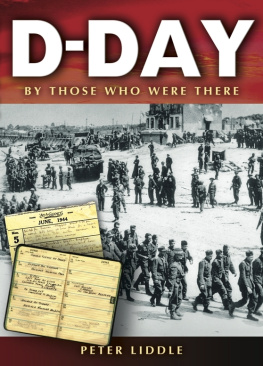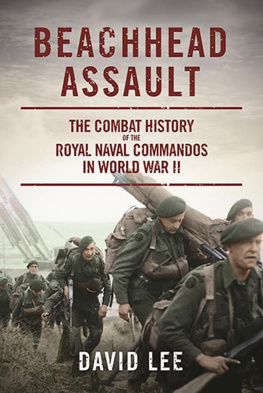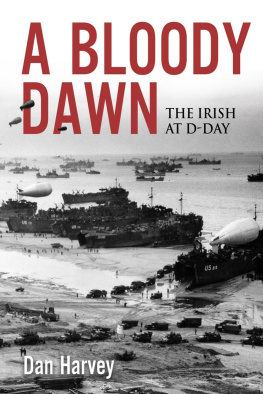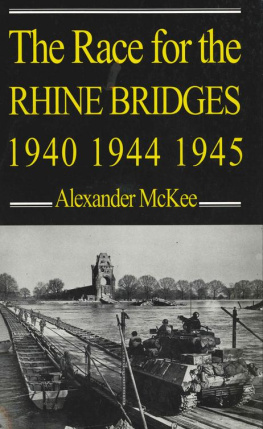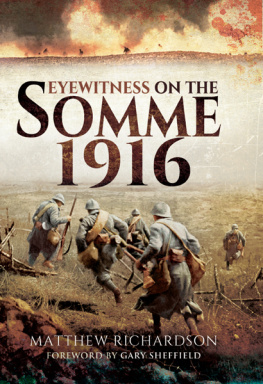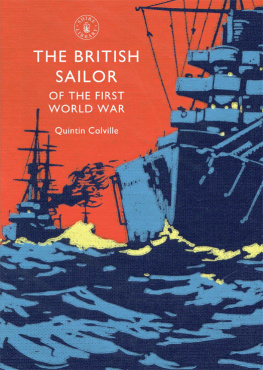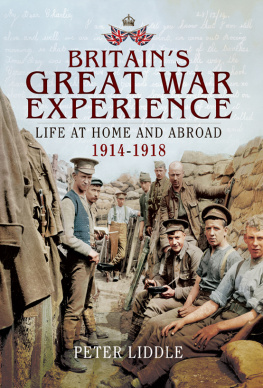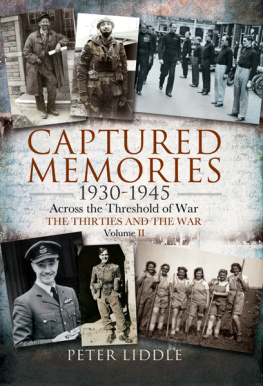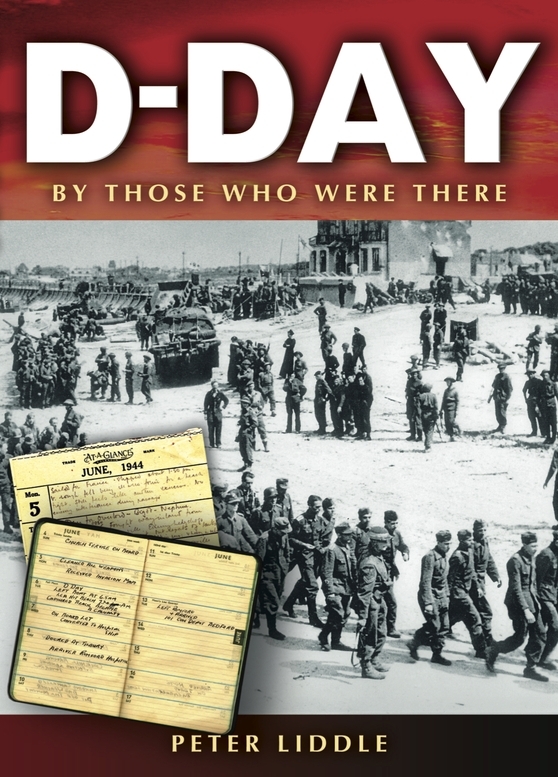Acknowledgements
Readily I acknowledge that my greatest debt in the preparation of this book is to all the men and women whose papers and recollections I examined in the search for suitable material. The authors of that which was chosen are listed by their name and rank in 1944 in the index. I was fortunate in that evocative original material and recollections proved available in abundance or emerged following targeted enquiry. The difficulty on some occasions lay in what to choose from the riches before me. The constraints of the length of this book and the subjective nature of choice will have resulted, I fear, in regrettable but inevitable omissions. My debt is to more men and women than appear in the index.
The second massive debt, one related to the whole of the book, is to my colleague in the Second World War Experience Centre, Cathy Pugh. Cathys knowledge, enthusiasm, research organisational capacity and sheer dedicated hard work, have ensured that this book was completed in time. Such is Cathys approach to her work that she knows many of the men in the book through their papers and through correspondence, by ancient and modern means. I have been very fortunate in having her help and in the interest and support of another colleague Tracy Craggs who also knows the riches of the Second World War Experience Centre. Another colleague, long-term helper and friend, Carolyn Mumford, was responsible for the transcription of every single Centre tape-recording from which quotation has been made. Readers will see the inestimable benefit this has been.
The work of the Second World War Experience Centre has from its foundation been enhanced by its volunteer workers; this book has benefited similarly. Robert Carrington, who has assisted me before in books on both World Wars, provided invaluable research work on wartime documentation including photographs and then recollections. Stan Hope, former Mosquito Navigator, made a preliminary search in the Centres holdings for D-Day airmen as did Braham Myers, a former Gunner, for soldiers. Brahams command of French was also at my service. Doug Peers helped me with sailors. John Larder, our aviation expert, and young James Weatherill, gave me assistance without which I would have been under-prepared too. Some key tape-recorded interviews have been conducted by the team of volunteers and here Brian and Sheila Atkinson, Pat Clarke, Tracy Craggs, Julie Land, John Larder, Chris Nathan and David Talbot must be thanked. Vicky Britton worked extensively upon the Peter Prior D-Day papers; Trevor Mumford, by e-mail, fed me regularly with D-Day tape transcriptions and produced a data base of D-Day contacts from which the index is drawn; colleague Lesley Burke, by the same means, kept my links to assistance in Canada and the States maintained; Edie May-Bedell, Rosie Evans and Vicky Britton again, scanned photographs being chosen; Brenda Clifton and Trevor Mumford typed late-arrival pieces and kept me calm in the final stages as Trevor prepared the book electronically. Braham Myers and Robert Carrington assisted with the proof-reading. My thanks too to Ian Sayer and Ken Pugh for access to their private collections of documentation. I am truly grateful for the generous spirit in which all this help was given.
In the United States, good friends Phil Parotti in Texas and James Cooke in Mississippi in their different ways blazed trails which brought splendid returns. John McManus from Missouri gave his assistance too. The remarkable help given by Betsy Loren Plumb, Assistant Research Historian at the Eisenhower Center and the National D-Day Museum, New Orleans, went quite beyond the call of duty in assisting an external researcher. In many years of research I have never had institutional help given to match that which came from New Orleans and I am happy to record a deserved tribute to this archive and its staff.
How grateful I am to David Dilks and his long-cherished Canadian friends and their contacts concerning Juno Beach experience. In this respect my thanks are due to Professor William Rodney, W G Buchanan, Neil J Stewart, W F McCormick and John Whitton. From Canada also, Jim Lotz, from Halifax, Nova Scotia and Terry Copp of Waterloo, Ontario, despite heavy working schedules, in different ways gave me superb help. Terrys provision of the exceptional volumes of Jean Portugals They were There: A Record for Canada was of great assistance for the Juno chapter. In the same vein, Richard Campbell Beggs work in New Zealand on behalf of the Centre is evident in several chapters. It would be difficult to match his loyalty to the vision of a Second World War Experience Centre.
I am indebted to Roger Chapman of the Green Howards Regimental Museum, and Chris Dunn of the Friends of the Green Howards, for characteristically generous help and for help of the same nature from Tim Brown, Peter Francis and Tori Bennett of the Commonwealth War Graves Commission two organisations here pre-eminently worthy of respect and of our support. David Preston gave me access to the German newspaper of 7 June 1944 and Tony Martin of the German Department in Benton Park School, Leeds, translated 1944 and 2003 German letters for me. Just in time came research assistance from France, Pierre and Francine Besson in Paris, and concerning German testimony, Gerry Kaeppner, Gotthard Liebich, Felix Wortmann and Tony Hellen all laboured to good effect.
There are still more people who played a part in the drawing together of this book, Anne Hoskot Kreutzer, John Bourne, Robert Maxwell, Dan Black, Pamela Campbell, Stan Skelacki and the design and production staff at Pen and Sword Books.
Penultimately I am so glad to record my appreciation of the fact that Major General Henry Woods has written the Foreword for this book. His keen intellect, sterling sustained support for the Centre and personal friendship are valued to the hilt.
Finally, anyone attempting a book is hugely blessed if he or she were to have a loving, supportive partner. I have one. Thank you Louise Liddle.
Peter Liddle, Leeds 2004
The Second World War Experience Centre 2004
Recommended Reading
Cawthorne, N, Fighting them on the Beaches: The D-Day Landings, June 6 1944 (Chartwell, 2003).
Copp, Terry, Field of Fire. The Canadians in Normandy. (University of Toronto Press, Toronto 2003).
Ellis, Major L F, History of the Second World War - Victory in the West . Volume 1. The Battle of Normandy (HMSO, 1962).
Hastings, M, Overlord. D-Day and the Battle for Normandy (Michael Joseph, 1984).
Howarth, David, Dawn of D-Day - These Men Were There, 6 June 1944. (re-issued by Greenhill Books, 2004).
Kershaw, R J, D-Day. Piercing the Atlantic Wall (Ian Allan Publishing, 1993).
Miller, R, Nothing Less Than Victory. The Oral History of D-Day (Michael Joseph, 1993).
Neillands, R, The Battle of Normandy 1944 (Cassell, 2002).
Neillands, R and D Normann R, D-Day 1944 Voices from Normandy (Weidenfeld and Nicolson, 1993).
Ramsey, W G (Ed) D-Day. Then and Now (2 Volumes in the After the Battle series. Publisher: Battle of Britain Prints Int Ltd, 1995).
Van der Vat, D, D-Day. The Greatest Invasion. A Peoples History (Raincoast/Madison Press, 2003).
For reference
Chandler, David G and Collins, James Lawton Jr, (ed.) The D-Day Encyclopedia (Helicon Publishing Ltd, 1995).
CHAPTER 1
Planning and Training
Serious planning for the invasion of Northern France was initiated as early as 1942, evolved into a far bigger military commitment than was ever originally put forward and while by definition concentrating on getting ashore on a fifty mile front and securing a beachhead, held to a far wider strategic vision bringing about the defeat of Nazi Germany. The invasion of France with the liberation of Paris were stepping stones to the ultimate objective, Berlin.

